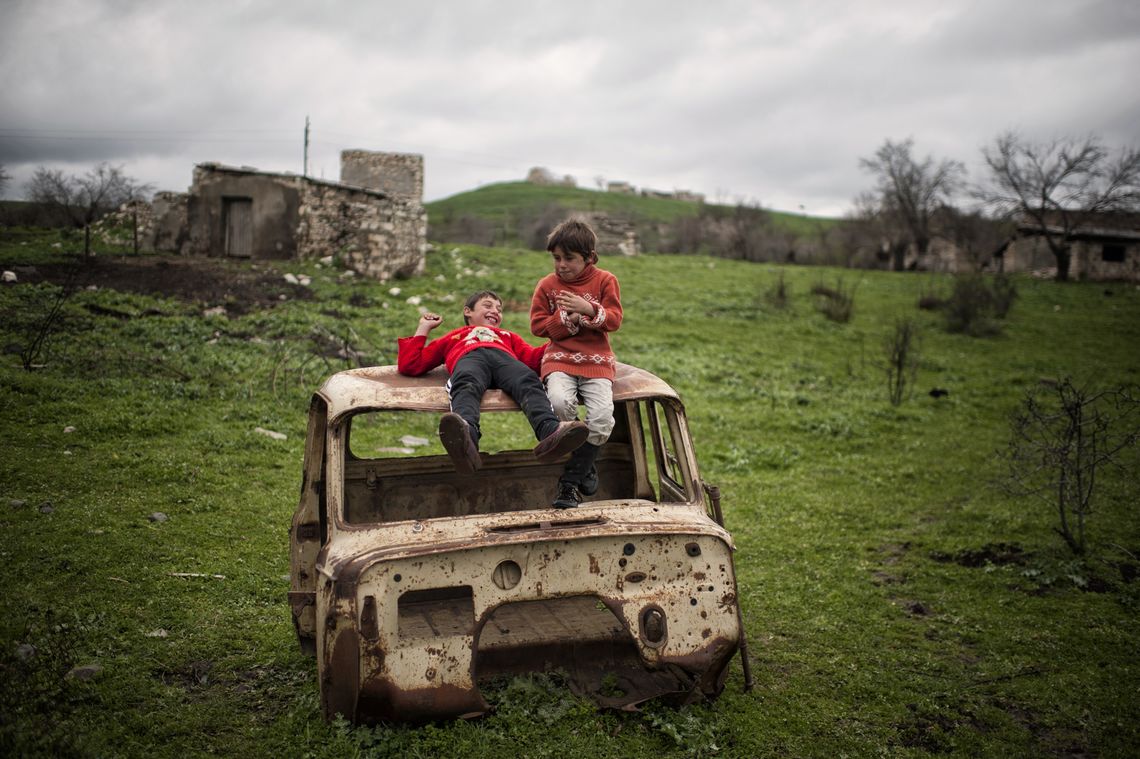One year has passed since the Four Day War in Artsakh (Nagorno Karabakh)
When news started trickling in on April 2, 2016, of clashes along the Karabakh-Azerbaijan Line of Contact most of us thought it would be quelled quickly. What we didn’t realize in those first early hours is that we would spend the next few days and weeks suspended between reality and horror. As news reports starting crashing along the shores of our disbelief, wave after wave, we buckled and then we mobilized. For many, it was too late.
The daily press releases and statements by official institutions became part of our daily rhythm. We woke up to bad news and went to sleep with the anticipation of more crushing news the following morning. The numbers of deaths matters. It matters to the families of the fallen soldiers. It matters to the mothers and fathers. Most of all, it matters to the children. The children who lost fathers and brothers and those who didn’t. Because, they too, must live with the incessant threat, the ugly reality that today’s peace and tranquility has no value as long as the war continues.
“No, my free winged rebel spirit will not become an owl among your ruins.”
Shushanik Kurghinian (1876 – 1927)


The Karabakh Movement, which began in 1988 as the Soviet Union was collapsing, was the expression of the will of the Armenians of Nagorno Karabakh for self-determination. It led to the Karabakh War, which lasted four years, a referendum that led to the declaration of independence in 1991; a ceasefire that brought the war to an end in 1994 and a 23-year state of no war, no peace for the people of Artsakh.
Nagorno Karabakh (historical name “Artsakh”) occupies the eastern and southeastern mountainous regions of Caucasus Minor and forms the northeastern part of the Armenian Highlands.






In June 1921, based on the withdrawal of Azerbaijan’s claims on the “disputed territories” and the agreement between the Governments of Armenia and Azerbaijan, Armenia declared Nagorno Karabakh an inseparable part of its territory. But only a month later, The Russian Communist Party adopted a decision (July 5, 1921) to separate Nagorno Karabakh from Armenia and join it to Soviet Azerbaijan.


A number of attempts by Armenians were made to raise the Nagorno Karabakh issue before the central authorities of the USSR after WWII (in 1945, 1965, 1967, 1977). Despite the fact that high-ranking officials acknowledged the problem, a solution was deferred indefinitely.


On February 20, 1988, the People’s Deputies made a decision at an extraordinary session of the (Soviet) Nagorno Karabakh Autonomous Republic Council to appeal to the Supreme Soviet of Azerbaijan SSR for secession, to the Supreme Soviet of Armenian SSR for unification, and to the Supreme Soviet of the USSR to approve this act based upon the existing legal norms and the precedence of resolving similar disputes in the USSR. With the votes 110 to 17, the resolution was passed.
Though the decision was in full accordance with the USSR Constitution, Moscow decided to reject Karabakh’s demands for reunification with Armenia. This decision brought out tens of thousands of demonstrators, both in Stepanakert and in Yerevan.


Sumgait Pogrom, 1988 – Official figures put the number of dead at 32. Unofficial reports place the figures much higher.
Baku Pogrom, 1990 – Depending on the source, the number of Armenians killed range from 68-90.
Maragha Massacre, 1992 – Over 50 Armenians were killed, 53 were taken hostage, 19 of whom never returned.


From the beginning of 1991, Azerbaijani military forces attacked the Armenian populations of both the Nagorno Karabakh Autonomous Oblast (NKAO) and the Shahumyan region. The escalating military operations compelled NKR to organize its own defense. Voluntary groups of freedom fighters were established throughout Artsakh. This paved the way for the creation of a regular army.
The end of 1992 was marked by the abatement of hostilities along the entire length of the Karabakh-Azerbaijan front.


In the middle of April of 1994, the NKR Defense Army liberated the Armenian villages of Talish, Chily, Madagis, and Levonarkh. Karabakh troops were also successful in their southern movement and managed to take control of the main road in Agdam-Barda.
These decisive military defeats compelled Azerbaijan to accept the Russian Federation’s proposal on a peace agreement.






One year has passed since the April War. Today, there is an uneasy calm along the frontiers. The people of Artsakh continue to dream of peace.



